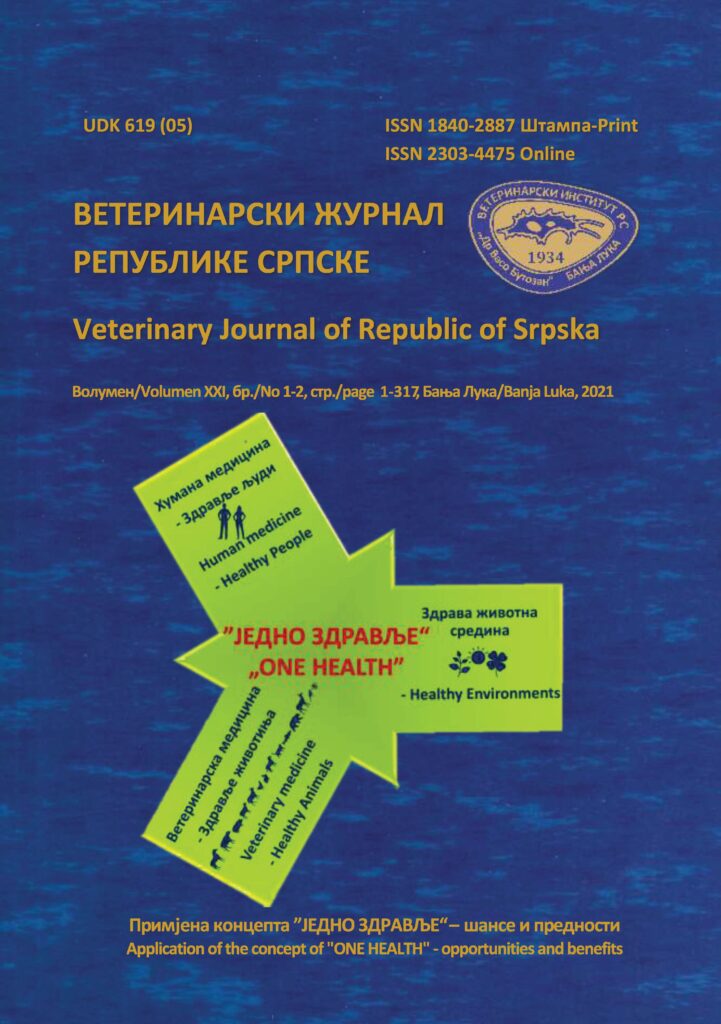NEGATIVE EFFECTS OF BEDDING AND LYING AREA ON SYNCHRONIZED ARTIFICIAL INSEMINATION IN DAIRY CAWS IN SARAJEVO KANTON
DOI:
https://doi.org/10.7251/VETJEN2101266CAbstract
Dairy cattle breeding is one of the most important branches of livestock production, which has been facing, for several decades, the chronic problem of declining reproductive performance. In 2005, the number of cattle worldwide was about 1,370,000,000, while in 2015 that number dropped below one billion, and in 2021 it shows a slight recovery as it was 1,000,970. This indicates the importance of applying different reproductive protocols in order to increase the number of cows in production. The type of bedding on which the animals stay, as well as the characteristics of the lying area itself, shows a significant impact on numerous physiological functions such as food intake, chewing, milk yield, but also levels of sex hormones. The type of bedding and lying area, which causes chronic pain and stress, leads to disorders of physiological and reproductive processes, since stress has direct negative impact on numerous cellular functions. A total of 66 dairy cows, 50 Holstein-Friesian cows kept on PD Butmir and 16 Simmental cows kept on a private mini farm, were included in the study. At PD Butmir, cows were kept in tie-stall housing system, while on a mini-farm they were kept free. Hormonal protocols of estrus and ovulation synchronization were used in April, May and June 2019. Cows were subjected to two estrus synchronization and ovulation protocols, Ovsynch and Cosynch72. At PD Butmir, 25 cows were subjected to Ovsynch and Cosynch72 protocols, respectively. At the mini-farm only Ovsynch protocol was applied. The Ovsynch protocol applied on PD Butmir had success in conception rate of 12% (n = 3), while the Cosynch72 protocol gave a score of 36% (n = 9). On the mini-farm, Ovsynch resulted in a conception of 25% (n = 4). Based on our results, the Cosynch72 protocol, compared to the Ovsynch protocol, was a better choice in the case of Holstein-Friesian cows kept in the tie-stall housing system. In the Simmental cows kept in the free stall system, the Ovsynch protocol proved to be better choice in achieving conception, compared to the Holstein-Friesian cows. Therefore, it is necessary to test several different protocols of estrus and ovulation synchronization, in order to find the most optimal one for a certain breed, type of keeping and breeding.

